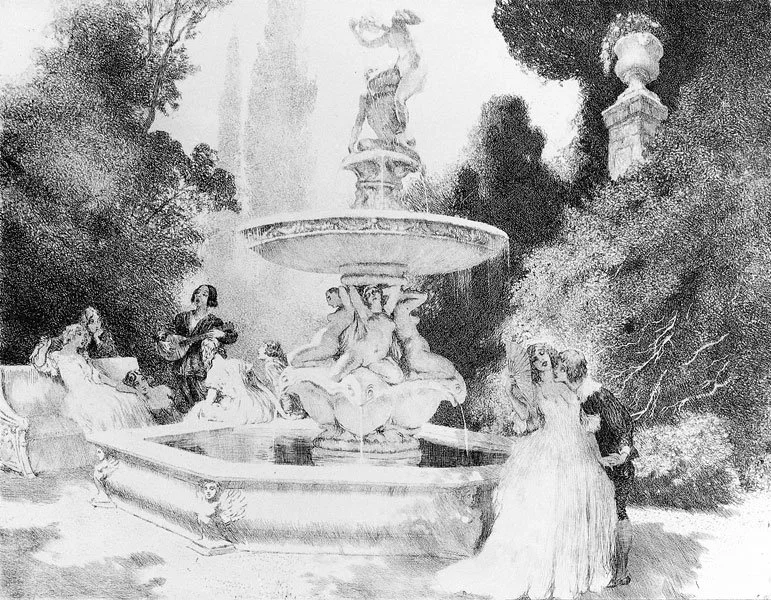Norman Lindsay
As well as a body of original works by Norman Lindsay, we also carry a wide selection of his limited edition facsimile etchings, produced by ODANA press. Highly desirable and beautifully reproduced from his original etchings, these facsimiles are collectors items in their own right.
Norman Lindsay is one of Australia’s most iconic artists. He was a draftsmen, painter, cartoonist and printmaker of extraordinary ability. Born in 1879 in Creswick, Victoria, Lindsay was fifth in line of ten children, six boys and four girls. Five of the children from this family would become distinguished artists.
At the age of sixteen Lindsay left home and moved to Melbourne to work on a local magazine with his older brother Lionel. In 1901, he and Lionel joined the staff of the Sydney Bulletin, a weekly newspaper, magazine and review. There they drew caricatures, cartoons and illustrations on demand – often in a style nearly indistinguishable from each other. Norman’s association with the publication would be lifelong.
Rose Soady began modelling for Norman in 1902. She would become his second wife, his most recognisable model, his business manager, and printer for most of his etchings. By the time he left for London in 1909, Rose had supplanted his wife and it was she who joined him there in 1910. An inveterate sketcher, he filled volumes with pencil drawings of the trip. He returned to Melbourne the following year having had his 100 drawings for The Satyricon of Petronious Arbiter published in London.
In 1912 he moved to Springwood in the Blue Mountain region of New South Wales. Except for a short hiatus in the late 30’s, he would live there until he died. It is now the Norman Lindsay Gallery and Museum and is open to the public. At Springwood Norman expanded his artistic horizons to include painting in oil and watercolour, etching, building ship models and writing. A year after moving there, in 1913 his first novel was published.Lindsay rejected Christianity, and his art depicts Bohemianism and Arcadian pantheism madly admixed in a fantasy world populated by erotic beauties, devils and demons. His sumptuous nudes were highly controversial, and in 1939, several were burned by irate wowsers in the United States who discovered them when the train in which they travelled caught fire. Ironically, the works had been sent to the States to protect them from the impending War.As early as 1904 his work had been deemed blasphemous; in 1930 his novel Redheap was banned and the following year the police proceeded against an issue of Art and Australia that showcased his art. There were many critics of Lindsay’s work but he remained popular with collectors, and the classic children’s book the The Magic Pudding is still just as popular with today's younger generationLindsay died in 1969. In the same year The Age of Consent, a film adapted from Lindsay’s 1935 novel was released starring Helen Mirren and James Mason. In 1994 John Duigan made his film Sirens about the life and works of Norman Lindsay.


